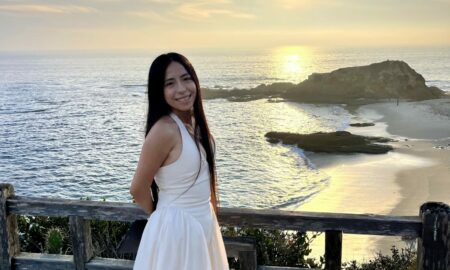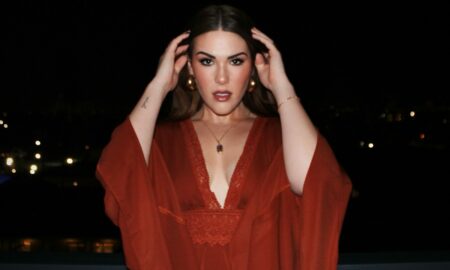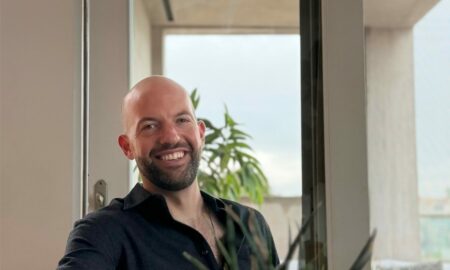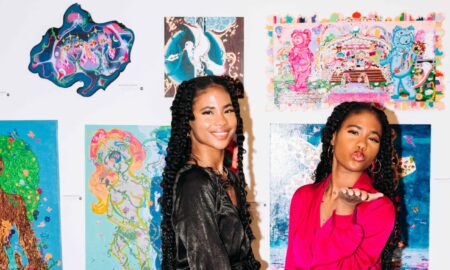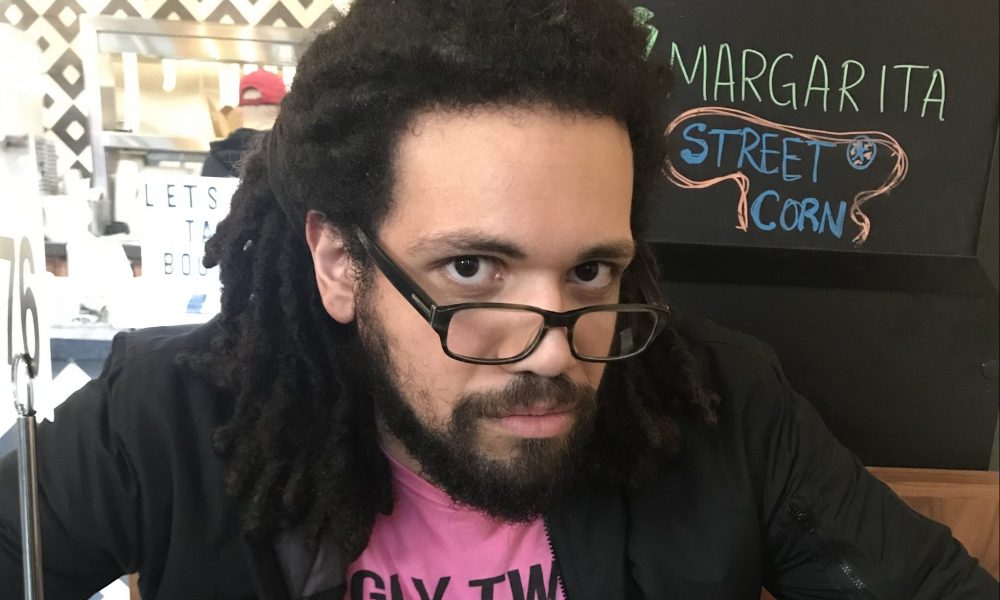

Today we’d like to introduce you to Marcus Clayton.
So, before we jump into specific questions, why don’t you give us some details about you and your story.
As a child–and I am very aware of the cliche of starting any story off with “as a child,” so bear with me and I promise I will rectify this by the end–I was fascinated by images and the creation of such images, be it tangibly visible or whatever nonsense was floating around in my head. As quickly as kindergarten, I learned that being an artist was severely out of the question, considering my talents for drawing were so poor that, as a five years old, I knew it was not something for which I had prodigal skill. But this didn’t change my wanton fascination with pictures. I loved movies and comics and I especially loved cartoons. Most of all, among those mediums, I loved storytelling via the utilization of images. In my youth, I would write outlines for long movies that were either rip offs of gangster movies, or I would rewrite lyrics to songs to better fit my understanding of the song (or a “better version” of it), or I would write little stories in notebooks no one was allowed to peruse because they were a safe spot for my own imagination.
In seventh grade, an assignment that called for storytelling was given to us as homework. It was one of the few times in middle school that I had felt any semblance of confidence (for anything), and I wrote the most imaginative story I possibly could: to my memory, a tour de force look into arcades and the horrors of virtual reality. It was one of two stories in the class that the teacher read and was even quasi-impressed by. She even sat me down after the second or third draft to not talk down to me about grammar or punctuation, but mechanics and what makes for a strong story. This was a taste of being taken seriously as a writer, and I simply wanted more of it. Over time, I read more to get a sense of what a good story was on the page, and I read an immense amount of poetry to try and understand the mechanics of language and how they can conjure imagery in the same way as visual art–only for the page. Naturally, as I entered college, I focused my studies on creative writing, and eventually pursued a Master’s of Fine Arts.
It was attaining this MFA–through Cal State Long Beach–that I was afforded the opportunity to meet some dear friends of mine who were like-minded creatively, though with varying personas (that mostly didn’t clash). We started a literary magazine called “American Mustard” as a way to celebrate our shared aesthetic in the literary world, and engage with writing all over the LA area. Shortly after Grad school ended, the magazine dissolved, but the tradition lived on through my second attempt at a journal, Indicia. This gave even more room for writers and other artists to have their work celebrated and archived as me and one of the American Mustard originals opened up doors to genres in both written and digital art, Not only has this thrived longer than our previous efforts, this feels like the true collection of works I longed for to feed my needs for the written word. It keeps me informed as to what the community’s writing has evolved into, and it makes me feel far less alone as a writer–as though my fascinations were not overwrought as a child, and that there were other people in the world whose fascination with images and words was just as profound.
Overall, has it been relatively smooth? If not, what were some of the struggles along the way?
Is anything ever really smooth? And I am not just talking about goals, but various things in life–what honestly constitutes as easy? At this moment, I am a first generation college graduate and currently enrolled in a PhD program for Literature and Creative Writing at USC, and I can say–as the son of a Costa Rican immigrant in my mom–it is a position I was never supposed to be allowed into. Growing up in South Gate, CA, the expectation was for its citizens (dominantly Latino and undocumented) to funnel into Trade Schools and the workforce after high school, which meant education was never truly emphasized in our school systems, and Universities and Colleges were goals far too out of reach for our non-white populace. I could also go on about how tumultuous my parent’s relationship was during my formative years, or decry the school system even more for doing so little to inspire students to believe we can be more than laborers, but honestly I got lucky in my teen years. I found support with my friends–also at least part Latino, also rough households, also having visions of a brighter and more educated future–who applied to Universities and studied to get the same treatment and opportunities as the more “high income” neighborhoods where we would have been deemed criminals for even stepping a single foot on their curb. While I decided to take my education through community college systems first, many of my friends made it to the Universities despite South Gate’s expectations. Their successes drove me to match them, to utilize my fascination with words and images and transfer it into an academic setting that was accepting of my likes. Then came transferring, then came the BA, MFA, and now PhD.
Please tell us about Indicia Literary Journal.
Indicia Literary Journal is a project that simply looks to take writer’s works and display them for an audience that is all at once niche and wide. Genres like poetry, fiction, micro fiction, and art are all mediums we include to better broadcast our love of literature and the arts, as well as remind ourselves that writing in contemporary times is still incredibly important, and to be able to give our accepted submissions space to feel seen and to have their work feel just as important as they should rightfully feel is a feeling that never dims–if anything, flares even brighter with every issue released. I think that’s all I’ll say on that–there’s a special feeling that comes with creating a literary magazine semi-annually, a magic that I do not really want to uncover for fear of losing it.
Any shoutouts? Who else deserves credit in this story – who has played a meaningful role?
You may want to ask Anthony “AJ” Urquidi about that, the co-founder of Indicia along with me. One of the four “musketeers” in my MFA and true brainchild behind both American Mustard and Indicia, he’s been the true figurehead of these magazines, physically putting them together as well as managing our editors alongside me in the process. He is the first to try and rally the troops when a new issue is being birthed, while I proceed to fan the flames along the way. When I am down about the project, he is the one who will fight to keep it afloat, to boost morale for our editors, to give us the vision that I can mold and give to the editors to carve into a reality.




 Image Credit:
Image Credit:
Marcus Clayton, AJ Urquidi, Laura Rivera, Monia Quintero
Suggest a story: VoyageLA is built on recommendations from the community; it’s how we uncover hidden gems, so if you or someone you know deserves recognition please let us know here.












